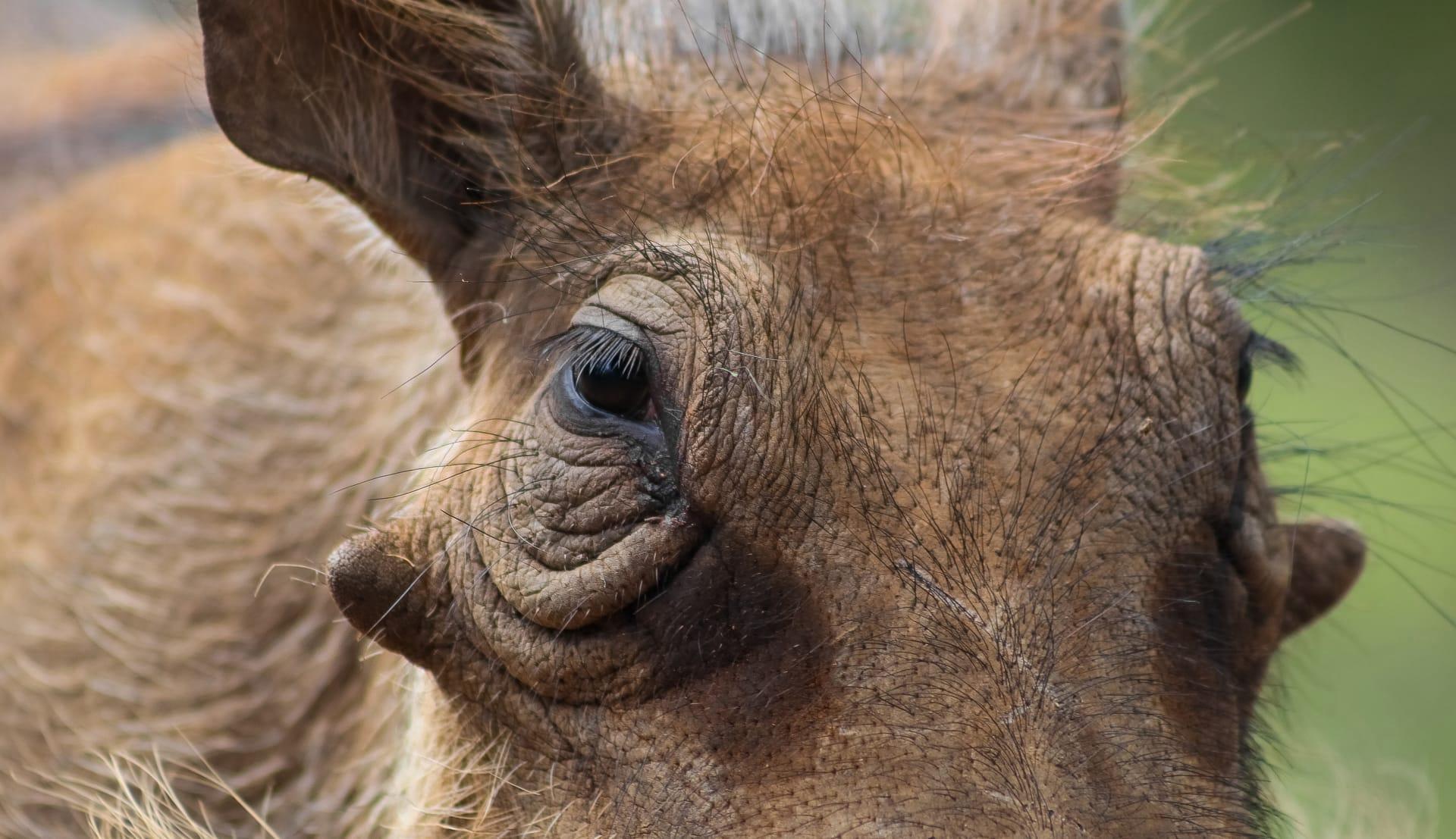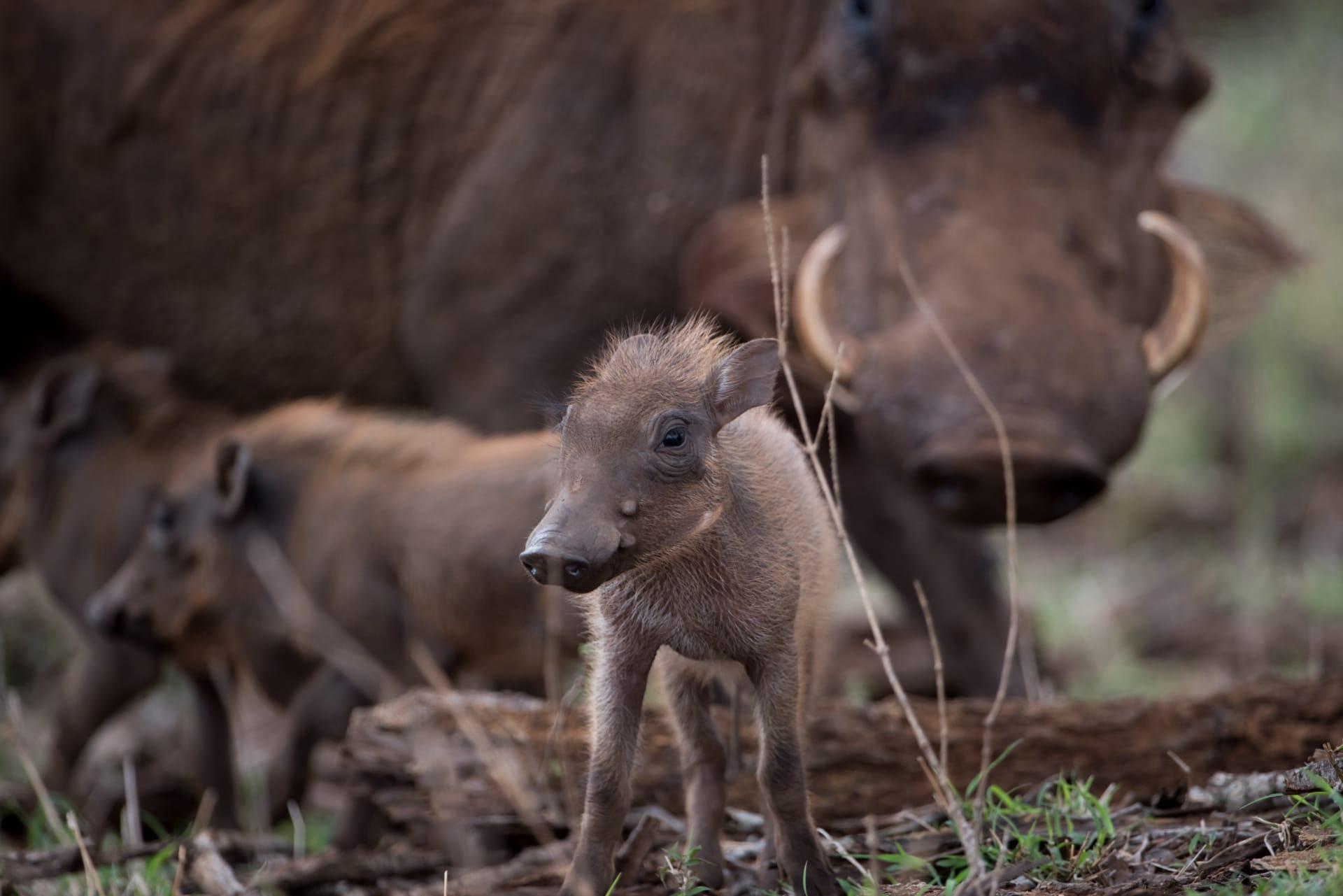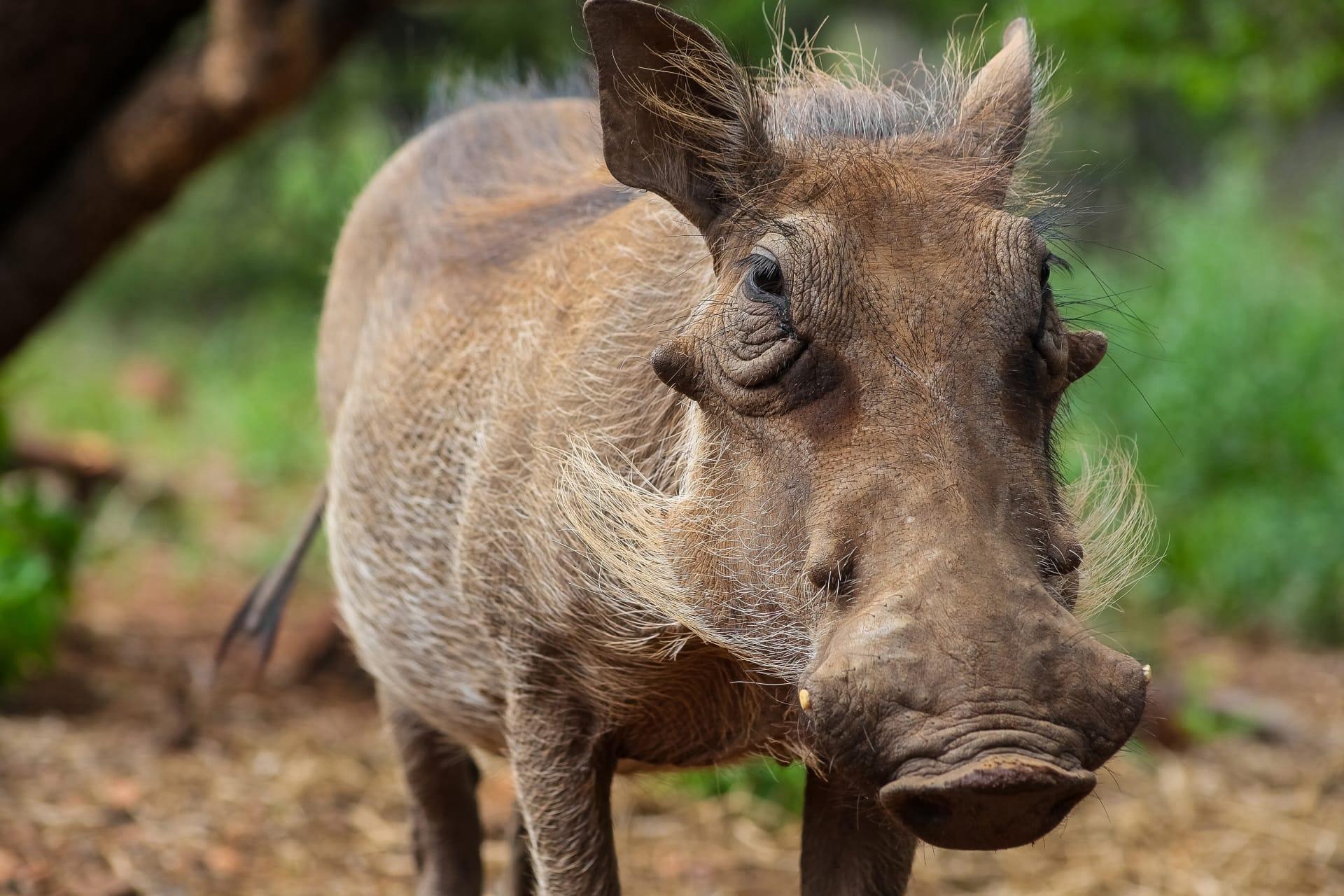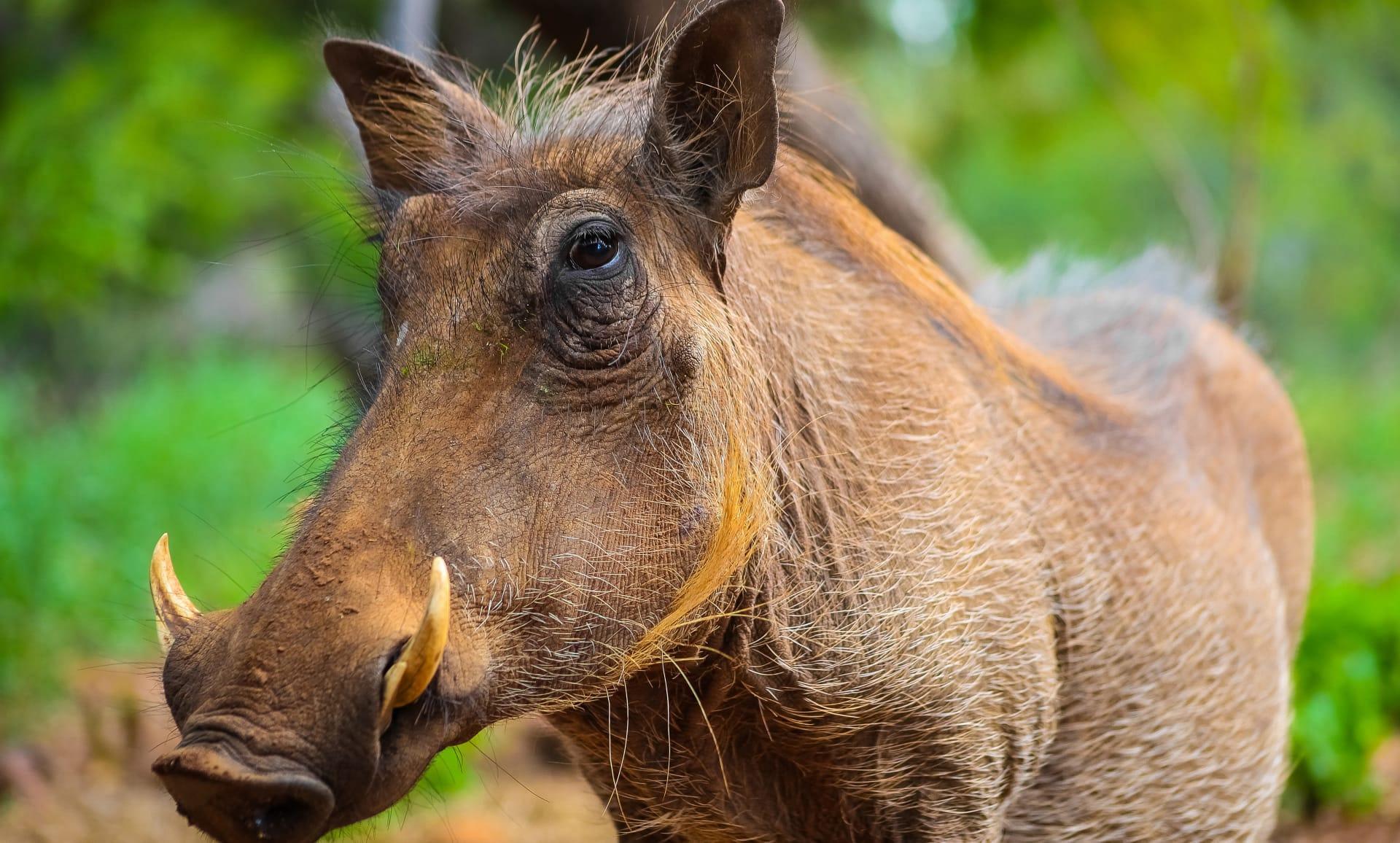Warthog Characteristics
- Home /
- Mini Encyclopedia /
- Animal /
- Warthog Characteristics
1
Warthogs, a fascinating species native to Africa, are distinguished by their robust bodies and distinctive features. Adult warthogs typically weigh between 110 to 330 pounds (50 to 150 kilograms) and measure up to 33 to 37 inches (85 to 95 centimeters) in shoulder height. They have a lifespan of about 15 years in the wild, which can extend up to 20 years in captivity. Their coarse hair ranges from gray to brown, and they possess a mane that runs down the spine to the middle of the back.
The most striking feature of warthogs is undoubtedly their tusks. These elongated canine teeth can grow up to 10 inches (25 centimeters) long. The upper pair curve gracefully upwards, while the lower set are shorter and sharper. These tusks are not just for show; they play a critical role in defense against predators, combat among males for mating rights, and digging for bulbs, tubers, and roots which form a major part of their diet.

2
Question: Do warthogs really kneel to eat and why?
Answer: Yes, warthogs are often seen kneeling on their front knees. This unique behavior is not a sign of reverence but a practical adaptation for survival. Their relatively long bodies and short necks make it challenging to reach the ground for grazing. By kneeling, they can comfortably access grass and other low-lying vegetation. This posture also aids in digging with their snouts and tusks for roots and bulbs, an essential part of their diet. It's a perfect example of nature's ingenious solutions to everyday challenges!

3
Warthogs are surprisingly agile runners. They can sprint at speeds up to 34 miles per hour (55 kilometers per hour). This speed is crucial for escaping predators in the open savannas of Africa, where they predominantly live. Despite their bulky appearance, warthogs are also adept at maneuvering through dense vegetation, demonstrating a surprising level of agility and speed when threatened.
As for hunting, warthogs are primarily grazers. They feed on grasses, roots, berries, and occasionally small insects or carrion. However, their diet is primarily herbivorous. They are especially adept at using their snouts and tusks to dig up roots and bulbs, which are a significant part of their nutritional intake. This rooting behavior not only feeds them but also plays a role in aerating the soil, demonstrating an interesting ecological interaction with their habitat.

4
Warthogs are primarily found in sub-Saharan Africa and thrive in grassland, savanna, and woodland habitats. They need a water source within their territory, as they require it not just for drinking but also for wallowing. Wallowing in mud helps them regulate their body temperature and protect their skin from parasites and the sun. This habitat preference makes them dependent on both the land for feeding and the water bodies for survival.
Reproduction in warthogs is a seasonal affair, usually coinciding with the rainy season when food is abundant. Females, known as sows, give birth to litters of up to 8 piglets, although 2 to 4 is more common. The gestation period is about 6 months. Uniquely, warthogs use burrows, often abandoned by other animals, for giving birth and sheltering their young. These burrows also provide protection against predators and extreme weather. The young are weaned at about 4 months old but often stay with their mother for nearly two years.

5
Book: "The Warthog's World" by Jonathan Scott, published in 1999 in the United Kingdom. This book offers an intimate look into the lives of warthogs in the African wilderness. Scott, a renowned wildlife photographer and expert, combines stunning imagery with insightful commentary. He explores the social structure, behavior, and survival strategies of warthogs in their natural habitat, providing readers with a comprehensive understanding of these unique animals.
Book: "Fields of Gold: The Story of Warthog Families" by Angela Scott, published in 2003 in South Africa. This book delves into the family dynamics and social interactions of warthogs. Angela Scott, a well-respected naturalist and author, shares her extensive observations from years of studying warthogs in the wild. Her narrative is filled with personal anecdotes, detailed descriptions of warthog behavior, and reflections on the challenges these animals face in the rapidly changing African landscapes.